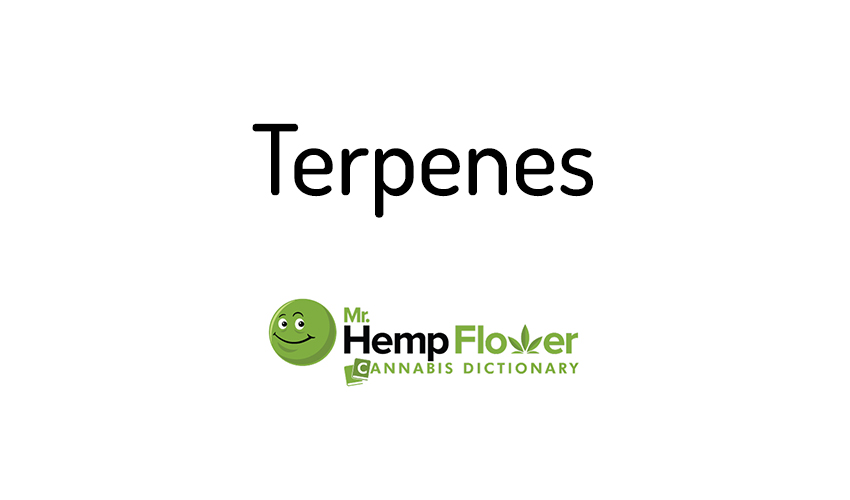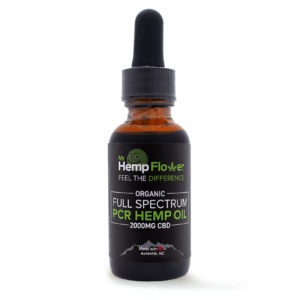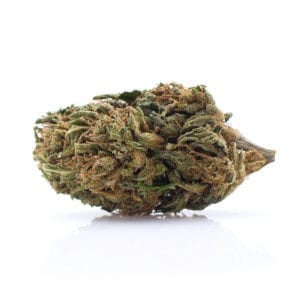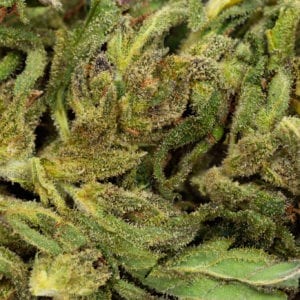Terpenes … What Are They Exactly? See Here

Terpenes
ˈtər-ˌpēns | Noun
Organic aromatic compounds that give the hemp plant its aroma and flavor. Present in most plant life and other organisms, these natural compounds influence the body’s endocannabinoid system (ECS) by interacting with cannabinoids. Formed inside hemp’s trichomes, the spectrum and intensity of light exposure affect the presence of these molecules.
Scientifically, these aroma molecules are defined as the largest single class of compounds found in essential oils.” They are also known as isoprenoids because they are made up of isoprene molecules or unsaturated hydrocarbons. Each isoprene molecule contains five carbon atoms with double bonds. Monoterpenes, the simplest terpenes, contain two isoprene molecules. Sesquiterpenes have three, and diterpenes have four. The five-carbon isoprene units are combined to produce “skeletons,” which are acted upon enzymes for functionality and processes that lead to an array of beneficial effects.
“The hemp plant contains over 200 aromatic compounds called terpenes, also present in most plant life.”
“This hemp pre-roll blunt smells like a forest of pine trees because of the high amounts of the terpene pinene.”
What are terpenes?
Smell the hemp plant — or walk into a conifer forest — and you’ll experience the power of terpenes. These organic molecules give each hemp plant its distinct fragrance and flavor. Every hemp cultivar (aka strain) has its unique aroma because it contains a specific terpene profile.
When you smoke CBD flower, dab or vape concentrates, these organic compounds work hard to deliver a flavorful experience. The type of adventure you’ll have with a particular hemp strain — citrusy, piney, woody, herbal, or tropical — depends on the strain’s aromatic profile.
Scent, flavor, and the quality of hemp flower
Scent — together with color and flavor — is considered one of the central indicators of the quality of hemp flowers. Hemp flowers with high levels of cannabidiol (CBD), cultivated and cured to the highest standards, displays a pungent yet fresh and pleasant aroma. Described as “dank” or “loud,” hemp flowers that emit a strong fragrance are considered top-shelf.
The flower’s terpene profile creates a distinctive aroma and flavor, and its liking is subjective to each user. The array of scent emitted by high-quality hemp strains ranges from “skunky,” to “piney,” and “diesely.” Often, users identify the “grassy” smell of some hemp strains as low quality hemp flower. But, a “grassy” fragrance and flavor doesn’t necessarily mean poor quality. When the CBD flower emits a pungent, distinct aroma, regardless of the flavor, it indicates hard at work terpenes in that particular strain.
The scent of the hemp flower may indicate the preference of the user to a particular terpene profile. Some users prefer fruity smells in their hemp. Others like a hint of fuel scents. Choosing your hemp flower based on your preferential scent may take you to the strain that best suits your needs.
Other natural sources of terpenes
As primary aromatic components of essential oils, they play a key role in the plant’s regeneration, oxygenation, and immunity defense. There are over 20,000 terpenes in existence in a variety of plants, fruits, and even animals. One of the most common hemp aromatic compounds, pinene, is also found in pine trees, rosemary, basil, and orange peel.
There is no recognizable difference between isolated pinene from pine or from hemp flower. However, there is a difference between their effects as part of each plant’s natural profile. The support that these aroma molecules give cannabinoids is what makes the hemp plant so special. We need further research regarding the healing effects of hemp terpenes versus terpenes from other plants. But, so far, we know that hemp’s terpenes support other natural compounds found in the plant (aka cannabinoids) in producing and enhancing the beneficial effect.
Which part of the hemp plant produces terpenes?
These aromatic, ultra-beneficial natural compounds are produced in the trichomes — the tiny glandular hairs sprinkled on top of the hemp flower. You can’t miss them, they give the plant a crystal-like, or “frosty,” and sticky feel. Aside from these organic molecules, trichomes and their resin glands also produce your favorite cannabinoids. Both tetrahydrocannabinolic acid (THCA) and cannabidiolic acid (CBDA) — which turn into THC and CBD, respectively, during the process of decarboxylation — are made in the trichomes. In a nutshell, trichomes are the most valuable and richest part of the hemp plant.
Terpenes vs. terpenoids
As cannabidiol (CBD) and the hemp plant grew in popularity, the terms terpene and terpenoid have been used interchangeably. There is a difference between these two terms. Terpenes are hydrocarbons or compounds made of hydrogen and carbon. After drying and curing of the hemp plant, terpenes are oxidized, and that’s when they become terpenoids.
The Role of Terpenes in the Plant
Plants create aromatic molecules for protection against insects, herbivores, and other environmental dangers. These natural compounds are also responsible for the plant’s regeneration and oxygenation. Due to their key role in plants, they act as potential immunity boosters in humans. They provide immunity defenses in the people who consume them and the plants that produce them.
The hemp plant contains over 200 terpenes, out of which the majority are present in trace amounts. They are so tiny that current testing hasn’t been able to detect them. So, why does the hemp plant produce all of them, as minor as they are?
Research points out several factors behind the terpene diversity in plants. One of them is terpene synthases (TPSs), or enzymes responsible for creating their structure. These enzymes have the ability to produce multiple terpenes from the same basic structure. They can also provide pathways for the production of new terpenes.
Another factor may be the possibility of terpenes to diversify. This ability is considered an element of defense against natural enemies that, in the future, will also evolve and diversify their counter-defenses. The possibility that the diversity of terpenes in plants is a result of human cultivation and breeding techniques also exists. Breeding for desired traits in hemp might drive the diversity of these aroma molecules. It’s important to note that the human factor may also change the important adaptive mechanisms against environmental stressors.
How Environmental Factors Affect Terpene Expression
There are many factors that contribute to terpene-heavy hemp cultivars, including growing, harvesting, and curing conditions. Hemp consumers understand the importance of these organic aroma components in their products, so preserving them is more important than ever.
When growing indoors, the grower has greater control over environmental factors that take away or contribute to the hemp plant’s terpene expression. Indoor growers may use hydroponics to grow their hemp plants. Hydroponics is a method of growing plants without soil by using mineral nutrient solutions in an aqueous solvent.
While this growing method doesn’t necessarily inhibit the expression of terpenes, growing the plant in traditional soil makes it easier to ensure a unique terpene profile. One of the factors that can inhibit their expression is an excess of nutrients. Growers can combat such factors by reducing nutrient intake a couple of weeks before harvest.
Harvesting time is the trickiest part and a matter of finding the middle ground. To get an abundant terpene profile, growers should not harvest too early or too late. Harvesting too early may discontinue the full production of cannabinoids and terpenes in the flower. Harvesting too late may ruin the terpene profile and cause a decreased chemical potency of trichomes. It may also cause them to break off entirely.
Another important factor when growing hemp flower for these aromatic molecules is the temperature. The ideal temperature is sufficiently cool and ranges from 77-80 degrees Fahrenheit during the day and 7-10 degrees Fahrenheit colder during the night. The drying process should be performed under sufficiently cool temperatures — between 65-67 degrees Fahrenheit to reduce their evaporation. Gentle cultivation of the hemp flower also increases the chances of getting a terpene-rich final product.
Terpenes And the Human Body
Aside from their role in plants to provide flavor and aroma, these organic compounds support other hemp molecules in producing healing effects. The synergy between terpenes and cannabinoids is known as the entourage effect and is the reason why these aroma molecules have been a critical area of research.
Extensive research suggests that these aromatic compounds play an immense role in tempering THC’s intoxicating effects and creating synergy with phytocannabinoids to elevate their therapeutic value. That’s why many people go for broad spectrum, full spectrum, or whole-plant hemp CBD products when consuming hemp for personal or medical reasons. Countless cannabinoid-terpene combinations prove more potent and effective than isolated hemp compounds.
The relationship between terpenes and cannabinoids can go either way — they may exaggerate or suppress one another’s effects. It all depends on the cultivar and the individual response of the user to it.
Stopped here on upload
Primary and Secondary Hemp Terpenes
The hemp plant contains hundreds of terpenes, but only a select group is present in sufficient amounts. Here are the elven (11) most recognized terpenes in hemp, along with their aromas and potential health benefits.
Myrcene
As one of the most prominent terpenes in hemp — together with caryophyllene — it’s present in most hemp cultivars on the market. Its signature “‘earthy” aroma is also prevalent in herbs, spices, and fruits, including parsley, wild thyme, hops, lemongrass, and mango fruit.
Myrcene may be an effective anti-inflammatory agent and great for alleviating pain. One 2015 study revealed that it might be helpful in treating osteoarthritis. You will find this terpene in cosmetics and fragrances. As a common ingredient in your recipes, you can recognize it through its spicy, earthy flavor with sweet undertones.
Caryophyllene
Beta-caryophyllene is another hemp terpene that you can find in most strains. Praised for its herbal spiciness with hints of wood, caryophyllene is a common food additive. Naturally, it’s found in black pepper, cinnamon, and hops.
Caryophyllene exhibits potential pain-relieving effects in animals and is a potent compound in anti-inflammatory salves and topicals.
Pinene
Recognized for its “piney” aroma, pinene is one of the most predominant terpenes in all plant life. You’ve encountered pinene and its aroma when walking into a forest full of pine trees and other conifers. This terpene gives certain hemp strains a “piney” aroma. It exhibits potential anti-inflammatory properties and is known to protect from ulcers and improve airflow to the lungs.
Limonene
As the name implies, limonene is a hemp terpene also found in the citrus fruits — hence its strong “citrusy” smell. If you’ve ever sniffed on some of your lemon-based cleaning supplies, you’ve experienced its pleasant scent. Like many terpenes, it’s also used by the perfume industry. Limonene could be a potential immune booster, help with heartburn, and pain.
Terpinolene
You’ll recognize it in hemp for it’s fresh herbal-citrus aroma. It’s also present in various plants known for their pleasant fragrances, including rosemary, lilacs, conifers, and apples. To experience it in nature, sniff a pine cone and let the fresh woody aroma overwhelm you. A potent antioxidant in humans, terpinolene has also shown sedative properties in animals. It’s commonly found in classics like Sour Space Candy and Suzy Q Hemp Flower.
Humulene
If you’ve been around hemp long enough, you’ve heard about humulene. This common hemp terpene is also present in hops, clove, basil, sage, black pepper, and ginseng. Humulene carries a corresponding “hoppy” aroma. According to research, it may be an effective topical anti-inflammatory agent and pain reliever.
Linalool
Linalool is a common fragrance ingredient with a pleasant floral aroma. Aside from hemp, it’s also found in rosewood, lavender, coriander, rose, bergamot, and jasmine. Due to its pleasant floral aroma, it’s often used in soaps and perfumes.
Linalool expresses several potential health benefits. Aside from its anti-inflammatory and pain-relieving properties, it’s known as an antifungal agent. Research shows that linalool inhibits the growth of fungal infections outside the human body, particularly those arising from candida. It also displays potential anticonvulsant and sedative effects.
Ocimene
Characterized with a strong, sweet, and herbal aroma, ocimene is found in various plant life, including hemp, mint, basil, mangoes, and orchids. It may act as an anti-inflammatory agent and display potential antiviral and antifungal properties.
Nerolidol
You will recognize it in specific hemp flower strains, like the Cat’s Meow CBD Flower, by its woody aroma. It’s also present in higher concentrations in full spectrum hemp CBD tinctures and concentrates. Nerolidol is used in a range of cosmetic and cleaning products.
Researchers studied this terpene for its potential anti-inflammatory, antifungal, antioxidant, and antimicrobial properties. Aside from these potential benefits, nerolidol may act as an effective topical delivery agent that helps other drugs penetrate the skin.
Bisabolol
Praised for its mild floral scent, bisabolol is frequently used in fragrances and cosmetics. Also known as alpha-bisabolol, it’s commonly produced by hemp and the chamomile flower. Due to its calming and soothing effects, bisabolol is believed to promote the skin’s natural healing process. According to animal studies, it may help reduce skin inflammation.
Guaiol
Guaiol is a hemp terpene with a fresh, invigorating woody aroma with rose undertones. It’s also found in guaiacum and cypress pine. It’s a central component of the essential oils in Xylopia sericea fruits known for their potential antibacterial and antioxidant properties. Guaiol is also a potential antimicrobial agent.
Terpene Chemotypes
If you’ve tried different hemp strains, you know that each of them produces different effects. But, it wasn’t up until recently that scientists began to understand the varying effect of different cannabis plants. Scientists started to look into and identify the genetic markers that separate cannabis varieties that produce CBD from those that produce THC. To distinguish between these two types of cannabis, researchers coined the term chemotype.
A chemotype is a term used to differentiate and classify cannabis varieties (both hemp and marijuana) based on their chemical profile. So far, researchers have identified three primary chemotypes: THC-dominant, CBD-dominant, and mixed THC-CBD chemotypes.
This suggests that the cultivars (or “strains”) don’t necessarily express one unifying chemotype but exhibit a spectrum of chemotypes. To put it simply, two plants of the same cultivated variety may exhibit slightly different chemical expressions. Identifying the chemical makeup (based on the lab results) of each hemp strain now allows consumers to choose their desired hemp experience. It has an even greater use for medical cannabis users in search of a specific strain to aid their health issues.
In 2018, researchers found that cannabis strains can also be classified based on their aroma, instead of just cannabinoid content. And this classification is based on the plant’s terpene profile. Researchers revealed that the most common aromatic varieties of the cannabis plant are:
Myrcene-Dominant Chemotypes
Myrcene-dominant varieties also feature high concentrations of pinene, the aroma molecule responsible for the distinctive aroma of pine trees. Some of the best myrcene-heavy varieties of hemp are Special Sauce CBD Flower, Wu 5 Hemp Flower, and Strawberry Cake Hemp Flower.
Limonene and Beta-Caryophyllene-Dominant Chemotypes
Plants with high levels of these two aromatic compounds fall into a chemotype of their own. Some hemp strains that fall under the limonene and beta-caryophyllene category are Sour Space Candy Hemp Flower and Lifter Hemp Flower.
Terpinolene-Dominant Chemotypes
The least common hemp chemotype contains terpinolene that’s most present in so-called sativa strains. Despite being known for their energizing effects, terpinolene-dominant strains might have a slight sedative effect.
In essence, classifying hemp strains based on their chemical makeup rather than appearance debunks the common indica/sativa/hybrid classification model. The indica/sativa classification was used to describe the plant’s physical traits and origin rather than its chemical makeup.
It was established long before we knew of cannabis terpenes, their variety, and the implications of their presence in each strain. This classification was also present before intensive breeding that diversified the chemical makeup of the cannabis plant occurred.
Terpene Products
Concentrates and Isolates
Hemp CBD concentrates are heavy in terpenes, so users get to experience the juicy flavors of this plant. Concentrates accumulate the most desirable compounds from the hemp trichomes — cannabinoids and terpenes — creating products unmatched in quality. Products like CBD Crumble, CBD Wax, and CBD Kief are full spectrum hemp concentrates loaded in terpenes such as bisabolol, caryophyllene, humulene, and myrcene.
Terpene isolates have also become more prominent on the market, especially in the area of alternative medicine. As isolates, they need to be handled with caution as some act as skin and mucous irritants.
Re-infusion of These Aromatic Molecules
Manufacturers also extract terpenes to re-infuse them into hemp CBD products. Re-infusion of these aromatic molecules into CBD isolate happens primarily for flavor. Although this process creates broad spectrum and full spectrum CBD products, adding these organic compounds into the product after extraction doesn’t make the product a “true” full spectrum or broad spectrum.
A “true” full spectrum CBD extract contains the entire hemp plant profile as initially extracted. To put it simply, the extractor used a terpene-heavy CBD flower and created the product with the original compounds “living” in synergy instead of adding terpenes to CBD isolate separately.
These aromatic compounds should never be vaped on their own because they tend to release toxins when heated to high temperatures.




